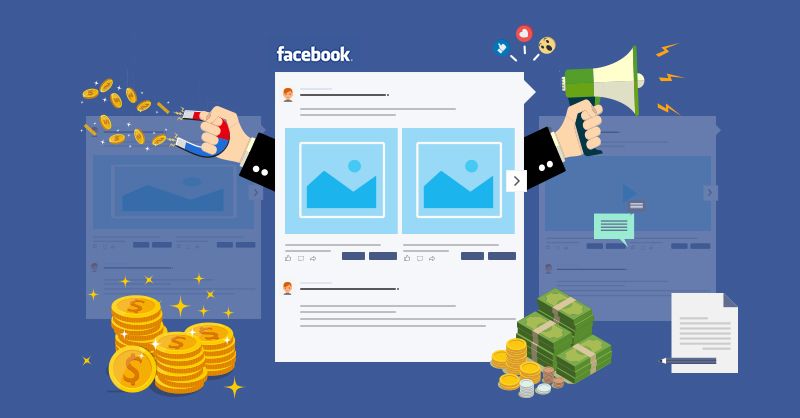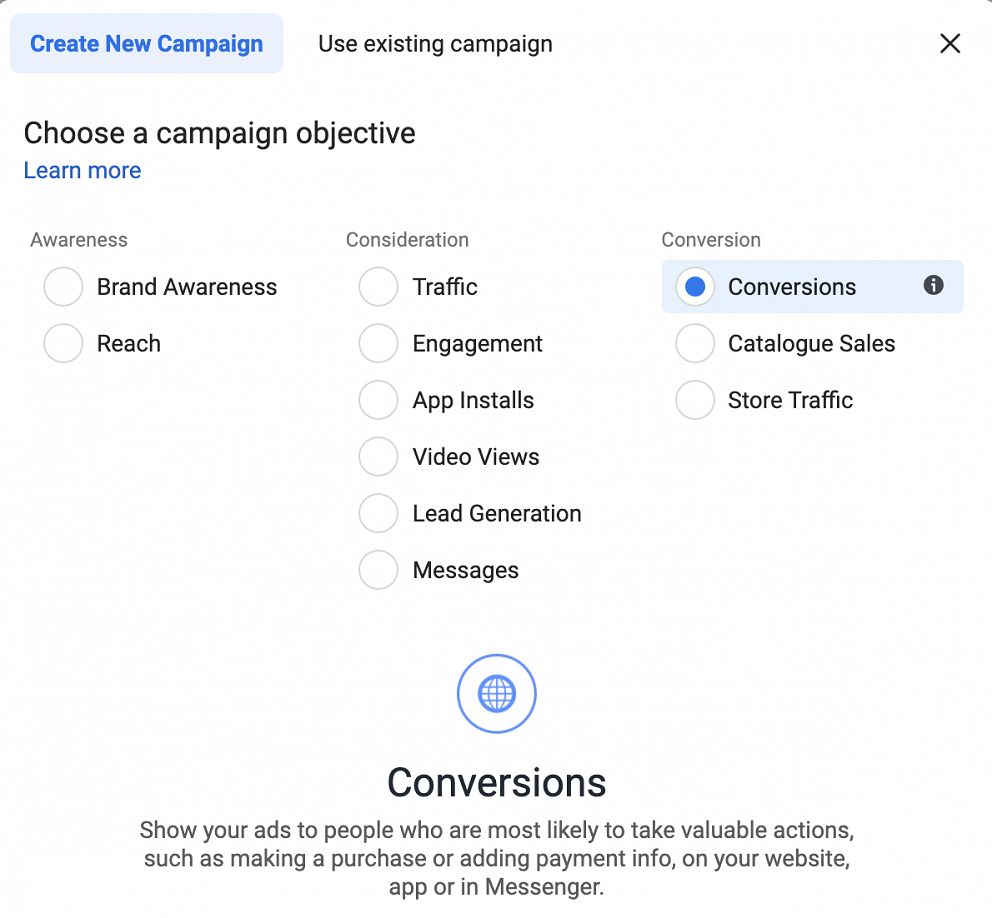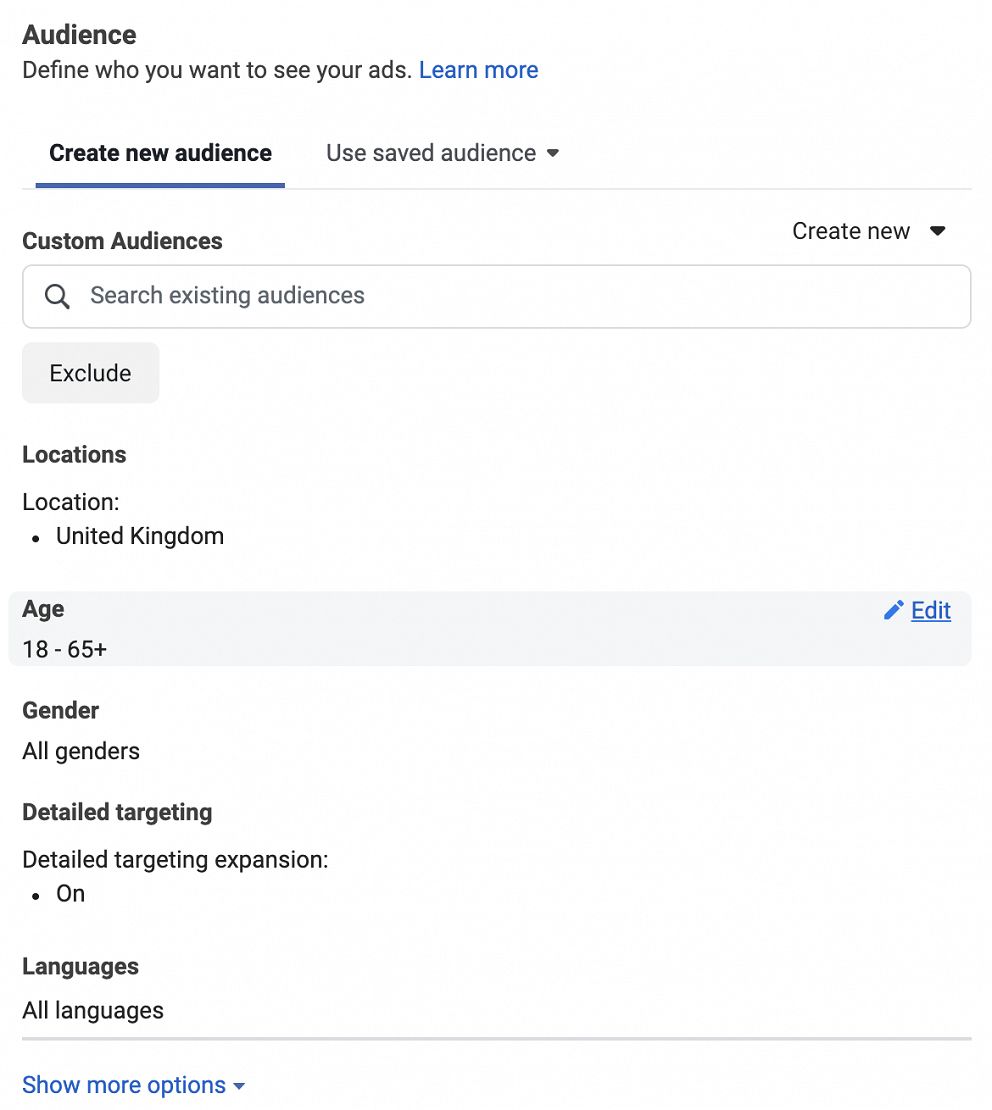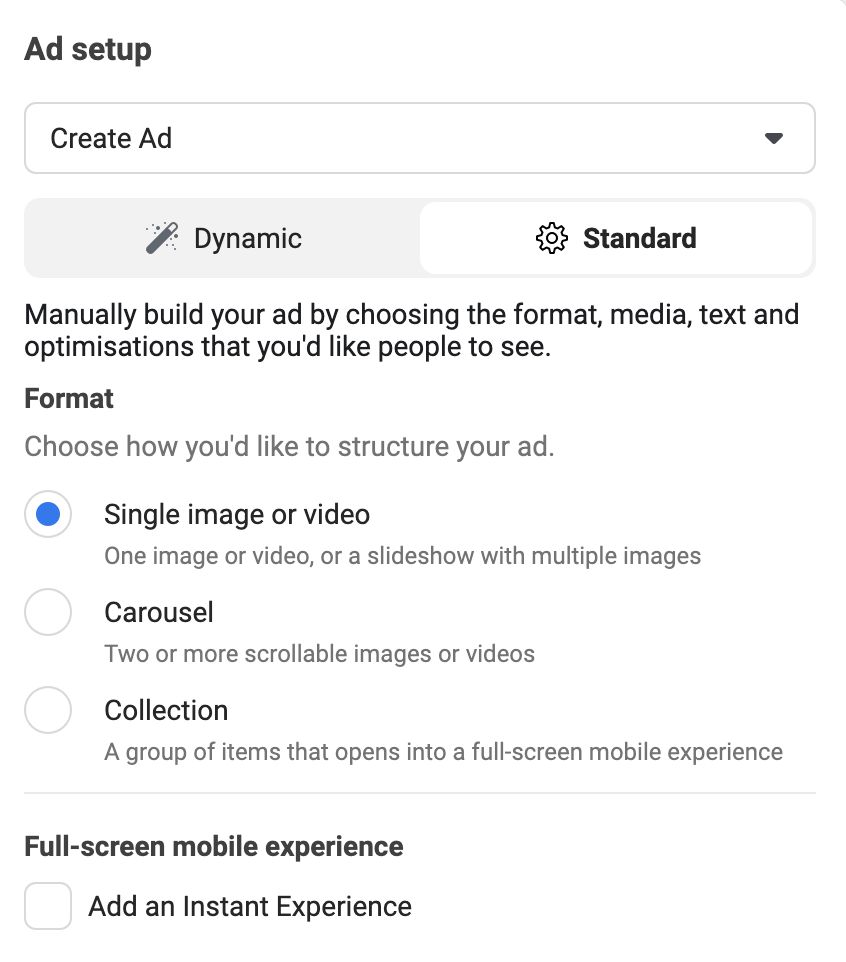Facebook Ads - How To Create and Structure A Campaign

It seems every marketer is obsessed with Facebook advertising, but what actually is it? Simply put: Facebook is the largest social media platform in the world. With an advertising audience of 2.14 billion, it’s no surprise that Facebook ads is one of the most powerful and widely used tools for marketers all over the world.
HOW DOES FACEBOOK ADS WORK?
Facebook Ads is powerful not only because of its ability to place ads in front of billions of potential customers, but also due to its effectiveness at targeting users and optimising campaigns. It’s a really smart piece of kit.
But how is it possible? From the moment you sign up to Facebook, it follows your every move. Monitoring the posts you like, the posts you interact with, the pages you follow, the videos you watch, your behaviours on and off the platform and much more.
All of this data helps Facebook understand you as an individual. Taking note of what you’re interested in, care about and even how you behave.
Facebook is able to place advertisements in front of users who it knows is most likely to both engage with the ad and complete the desired outcome (such as signing up to a form or purchasing a product).
HOW TO SET UP A FACEBOOK ADS CAMPAIGN:
There are many ways to set-up a Facebook Ad campaign, so we’re going to show you a basic way of setting up a campaign that is easy to monitor and deliver results.
First of all (If you haven’t already), you need to set up a business manager account. For all of the information on how to get set-up, click here.
Once you have set-up your business manager account and you’re ready to advertise, it’s essential you understand how to structure a Facebook advertisement campaign before going any further.
There are three main levels to a campaign:
- 1.) Campaign (Objective)
- 2.) Audience (Ad-Set)
- 3.) Creative (Ad)
1.) CAMPAIGN LEVEL (OBJECTIVE):
At the campaign level, you’re effectively telling Facebook what you want your ads to achieve. This depends on your business goals.
Start by asking yourself, what is the end result you want from this advertisement campaign. Do you want people to simply discover you brand, visit your website, attend a seminar or buy your product?
Once you have decided, you can pick from many of the campaign options that Facebook allows you to choose from. They’re all pretty self explanatory.
For example:
- Brand Awareness: Show your ad to people Facebook things will most likely be interested.
- Lead Generation: Find people most likely to sign up to your form.
- Conversion: Find people most likely take an action such as purchase a product.
The next option at Campaign level is the option to turn on ‘Campaign Budget Optimisation’. This feature effectively allows Facebook to distribute your budget across different ad-sets to help you achieve the best results. When following the particular ad campaign structure in this blog, we advise you to turn this feature on. From here you can set a daily or lifetime budget. For help on on choosing the right budget for you, read this blog here.

2.) AUDIENCE LEVEL (AD-SET):
The ad-set level is (amongst other things) where you tell Facebook who you want your advertisement to be delivered to. This section is essential for testing different audiences against each other so you find out what types of people best engage with your ad.
Facebook gives you a variety of tools to help you target the audiences you want to reach, such as:
- Location: Choose one or multiple locations of varied sizes. Targeting people that live there, recently visited, or even travel to that location.
- Age: Targeting certain age groups.
- Genders: Men, Women, or both.
- Detailed Targeting: Target people with specific interests, demographics, behaviours.
On top of these targeting options, you can also create custom and lookalike audiences:
Custom audiences: Audiences you create yourself. You have the ability to target recent website visitors, previous customers, users who watched a video, people who follow your page and much more.
Lookalike audiences: Choose a source such as a list of your previous customers and Facebook will use this data to deliver ads to users similar to those previous customers. This is an example of arguably the most powerful audience you can target.
You can also create a lookalike audience of your recent website visitors, this can be done using Facebook Pixel (a code that can be placed on your website and monitors traffic). For more information on how Facebook Pixel works and how to set it up, read this here.
At this stage, it’s good practice to create 4 different audiences to test against each other.
For example, let’s say you’re a marketing agency running a campaign to sell a piece of marketing software. Ideally, the users you want to target are business owners, marketers and people you believe are likely interested in your service.
Here’s what your four different audiences could look like:
- Ad Set 1: Lookalike audience of previous customers.
- Ad Set 2: Facebook users who are admins of a Facebook page.
- Ad Set 3: Facebook users interested in marketing
- Ad Set 4: Lookalike audience of people that visited your website in the past 30 days.

3.) CREATIVE (AD):
Once you have decided who it is you’re going to target, it’s time to actually create the advertisement users are going to interact with.
The creative is arguably one of the most important parts of your advertisement campaign.
You need to create eye-catching content that will grab the users attention. Combine this with well written copy that can hook the user in and encourage them to take the desired action.
Types of creatives:
- Single Image
- Single Video
- Carousel of Images
- Carousel of Videos
- Collection
Testing which types of content work best for your audiences is essential. That’s why you should create 4-5 different types of ads, each different from one another. Once the campaign is running you’ll be able to see what types of media your audience prefers, do they respond best to video, image, or video carousels?
For example:
- Ad 1: Image
- Ad 2: Video
- Ad 3: Carousel of Images
- Ad 4: Carousel of Videos
Make sure you duplicate all 4-5 ads and put them in each of your ad sets. This helps you determine what ads performed the best across all four of your audiences.

ANALYSING YOUR RESULTS:
Use Ads Manager to monitor your results. Look for which audiences are performing best and who are interacting with your ad the most. Also look at the performance of each ad, find out what type of creative is working best in each ad set.
It’s important you wait at least a week before you start analysing any results from your campaigns. If it’s your first time advertising and you’re launching a brand new campaign, your ads will still be in the learning phase. This means it’s still testing the best ways to deliver your ads.
GIVE IT A GO:
Hopefully this blog has given you a better understanding of what Facebook Ads is, how it works, and how best to set-up a campaign as a beginner.
It’s important we mention there are many different ways to set-up a Facebook Ads campaign, this a structure that we believe is great for anyone new to advertising via Facebook.
If you’re just starting out with using Facebook ads, it’s important you take a lot of time researching and gaining experience in how best to use the platform. You’re sadly not going to be an expert straight away, but with dedication and a lot of time, Facebook Ads could be extremely beneficial in your marketing strategy.
Need creative content created for you ad campaigns? Contact us today!